How Putin misunderstood his past victories
Though Vladimir Putin has led Russia to a number of grisly military triumphs, they may have misled him when planning the invasion of Ukraine
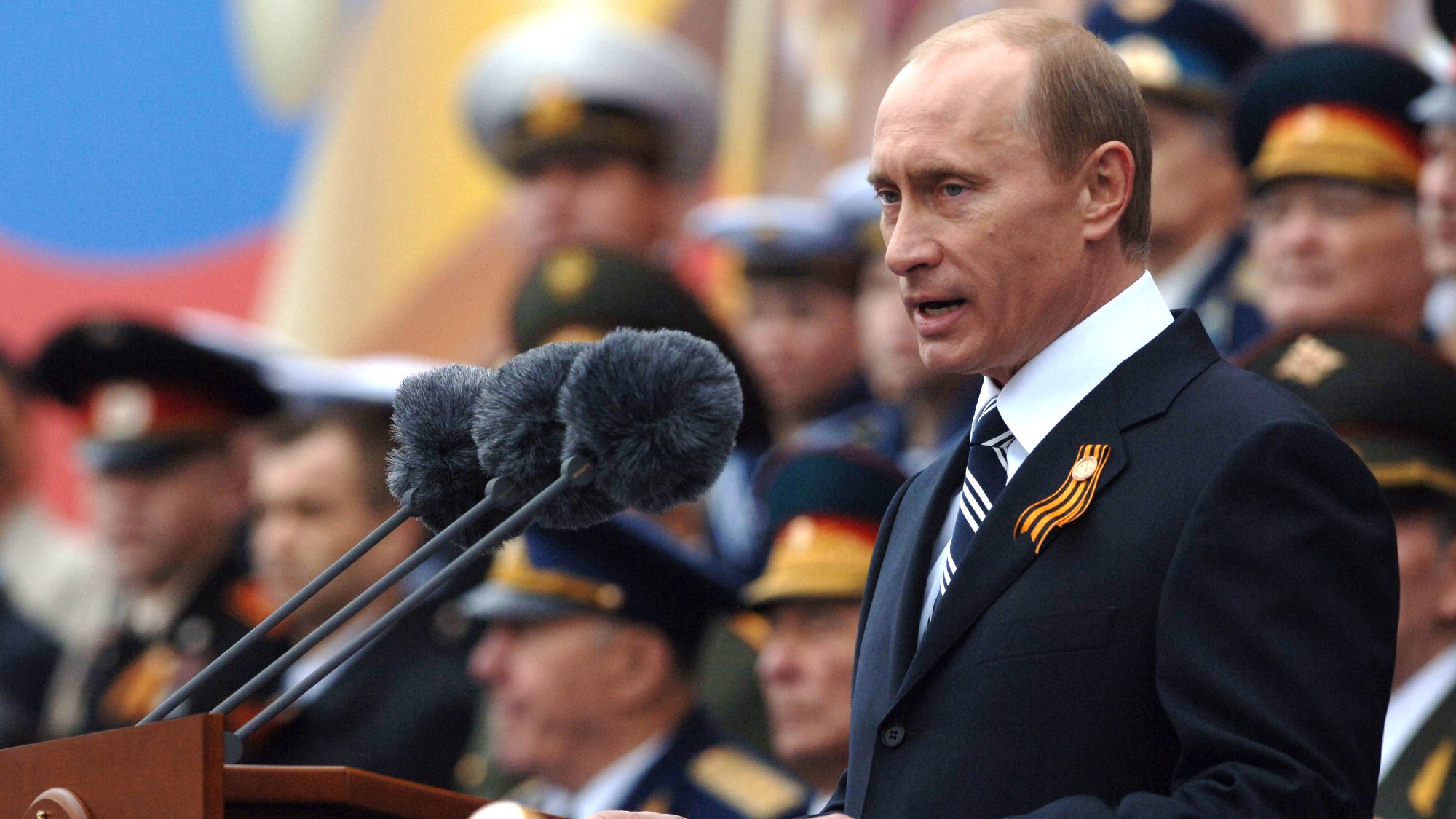
This article originally appeared in History of War magazine issue 131.
Mark Galeotti is the author of Putin’s Wars: From Chechnya to Ukraine, published by Osprey and out in paperback now
For all that he can scarcely walk past a tank or a fighter jet without a photo opportunity of him peering out of the cupola or ensconced in the cockpit, Vladimir Putin is no soldier.
He did his bare minimum reserve officer training at university, being assigned a technical rank of lieutenant, but abandoned it as soon as he could. He shows little sign of understanding the realities of warfare, from strategy and tactics to the unavoidable necessities of logistics.
The Week
Escape your echo chamber. Get the facts behind the news, plus analysis from multiple perspectives.

Sign up for The Week's Free Newsletters
From our morning news briefing to a weekly Good News Newsletter, get the best of The Week delivered directly to your inbox.
From our morning news briefing to a weekly Good News Newsletter, get the best of The Week delivered directly to your inbox.
This is something even Russian soldiers – even before the current war in Ukraine – uncomfortably acknowledge. Once, I was talking to a couple of officers, and when we had got past their inevitable wariness at talking to a Westerner (some drinks helped) it became clear that they had a complex attitude towards their commander-in-chief: at once respecting him as a strong and capable national leader, but at the same time unconvinced he truly understood warfare.
The irony is that, for all but three of the 25 years Putin has now directly and indirectly ruled Russia, he has been at war, declared or undeclared, domestic or foreign. Most of these wars were, in one way or another, victories, especially because they were limited in scale and objectives.
Nonetheless, it seems clear that the lessons Putin derived from them, sometimes accurate but often deeply mistaken, led him to his fateful decision to invade Ukraine in February 2022, and shaped his thinking as to how that should best be done.
The Second Chechen War: 1999 – 2009
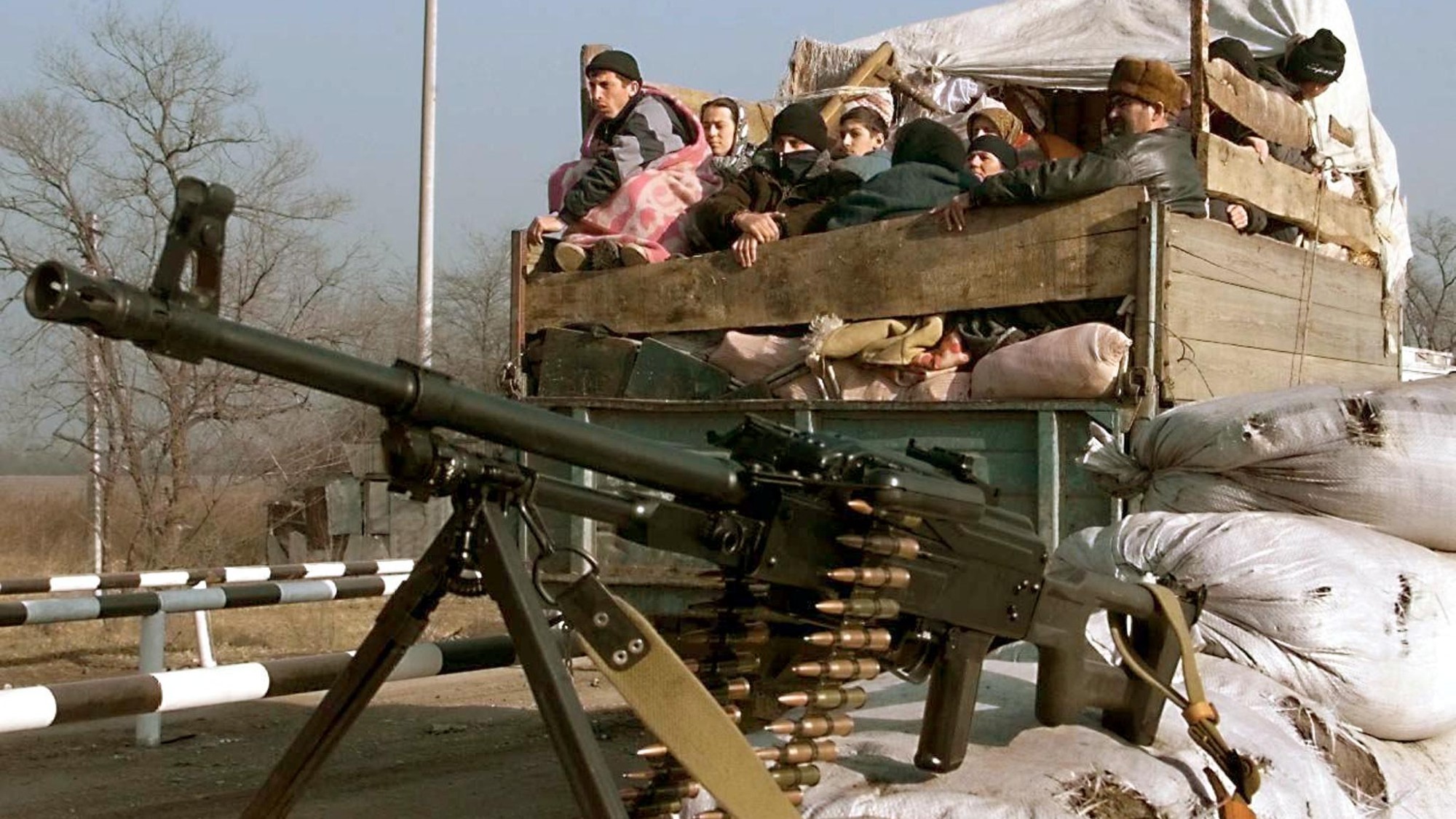
Chechen refugees cross the Chechen-Ingush border during the conflict, December 20, 1999
When Putin first came to power, the challenge was to fight a domestic war with what he had at his disposal, after at least 20 years of catastrophic military decline. The rebellious Chechen people of southern Russia had in essence fought Moscow to a draw in the First Chechen War (1994-96), and even while still prime minister and president-in-waiting in 1999, Putin was determined to address this challenge.
In September 1999, a series of explosions in apartment buildings across Russia killed more than 300 people. The Chechens were blamed, and this was used to justify a renewed campaign. In October, Russian troops crossed the Chechen border, in a war that would be the making of Putin's reputation as a tough, ruthless and indomitable leader.
Unlike the previous war, the Second Chechen War was backed by massive force, supported by a comprehensive information campaign to justify its brutal methods, and also drew on Chechens willing to fight for Moscow.
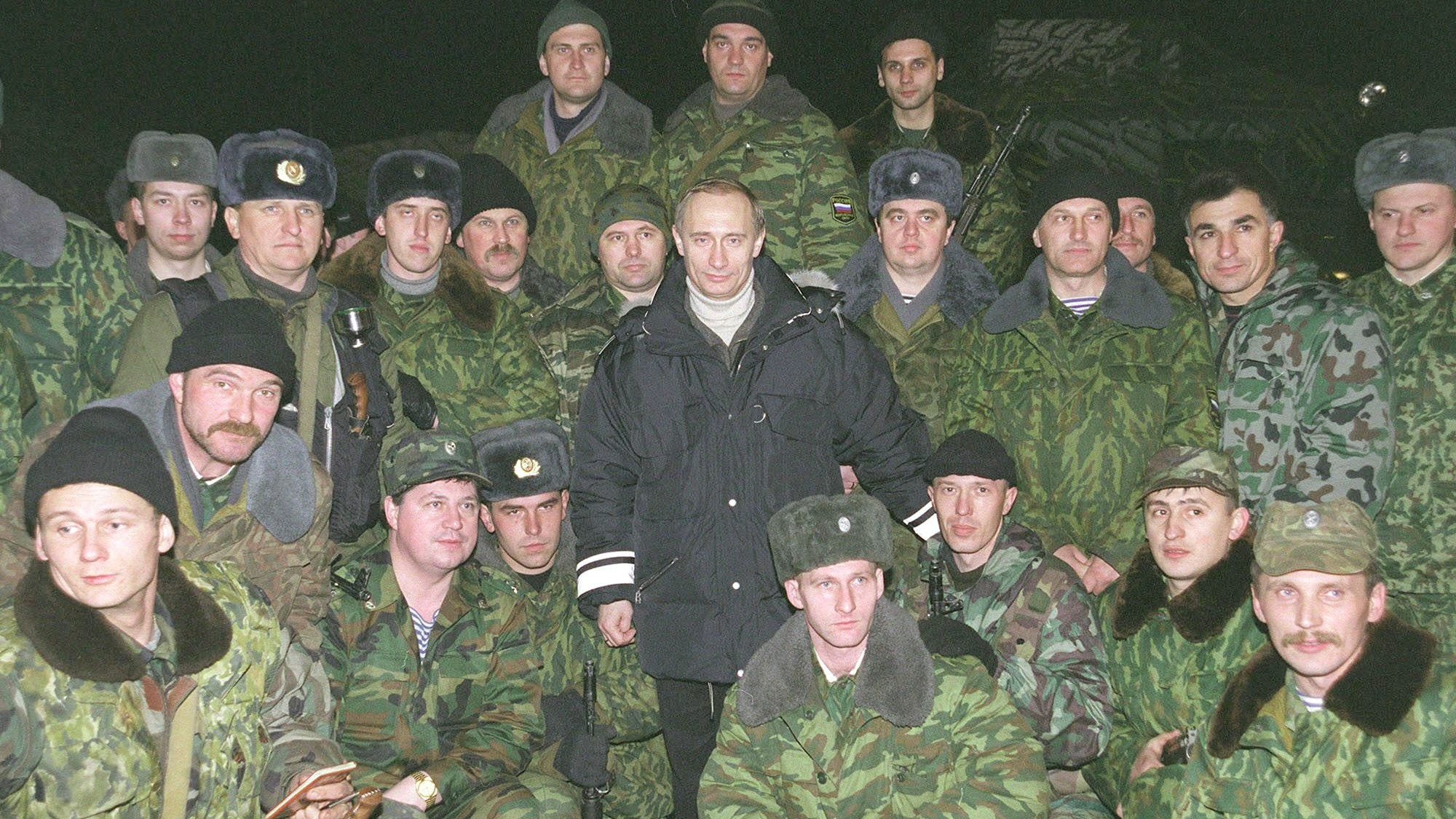
Then Acting Russian President Vladimir Putin stands with Russian soldiers east of the capital Grozny, Chechnya, January, 2000
This was an ugly conflict, even by the standards of civil wars. The Chechen capital, Grozny, was flattened. Chechen men were rounded up for infamous 'filtration camps', The official death toll was 5,200 Russian soldiers and police and over 16,000 rebels, but estimates of the civilian casualties range from 30,000-80,000.
Nonetheless, Moscow had demonstrated that it had the will and ability to keep its provinces in line. Most importantly, Putin felt he had proven not just that the Russian bear still had its claws, but that the ruthless use of force worked.
So long as he kept hostile journalists out and pitched this as simply a policing action against terrorists and jihadists, then his people would be happy and the West would do little but complain, and wring its hands when Russia presented it with a fait accompli.
The Georgian War: 2008
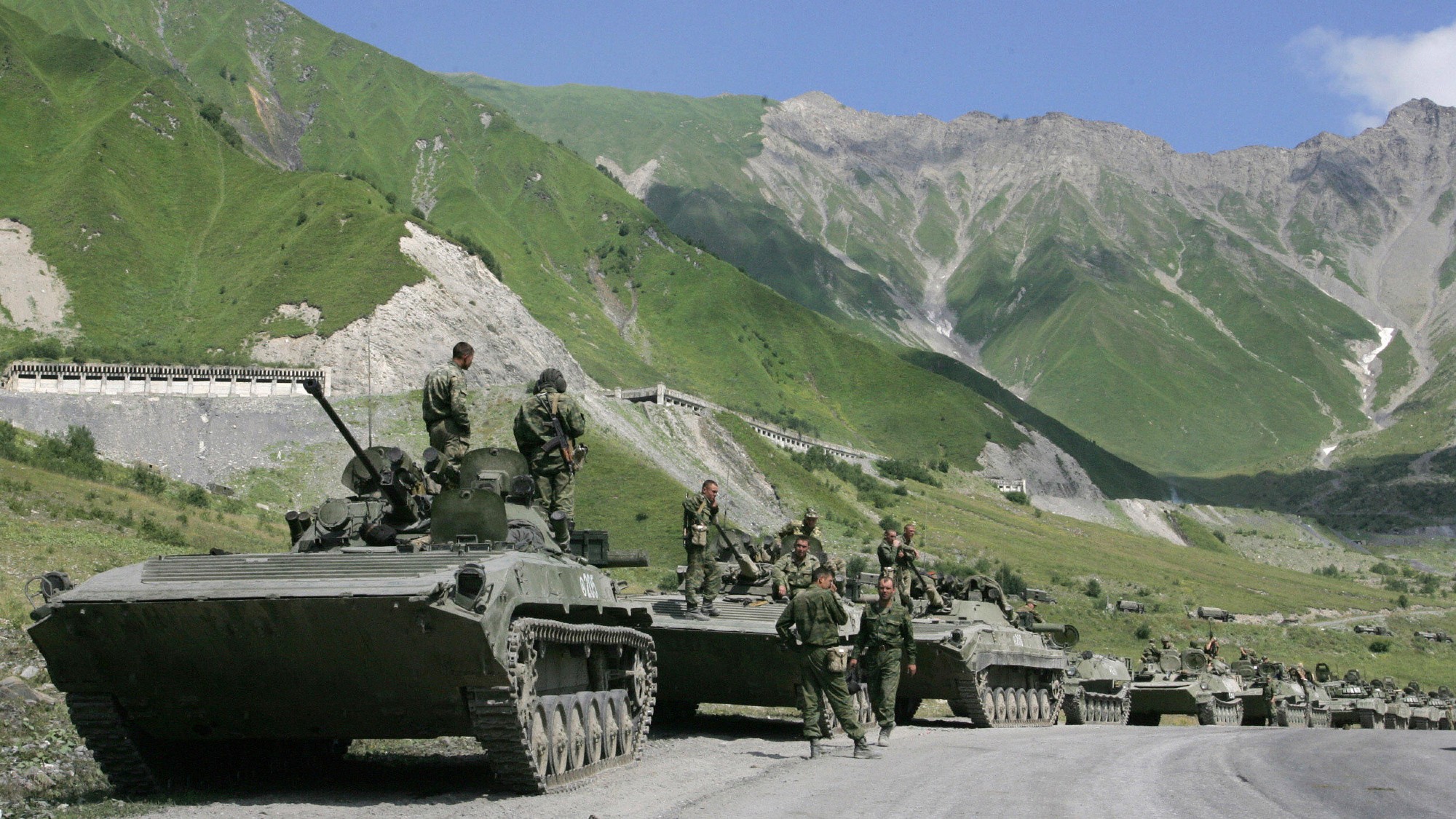
A Russian convoy makes its way through mountains to the frontline of the war with Georgia, August 2008
Chechnya, though, was at least legally part of the Russian Federation. What would happen when Moscow launched an operation abroad? Georgian president Mikheil Saakashvili had long been a thorn in Putin's side, with his vehement anti-Russian rhetoric and his eager courtship of NATO.
To Putin – at the time technically just the prime minister, not the president, but still the undisputed master of Russia – Georgia needed to be reminded that it was part of Moscow's sphere of interest, not least to provide a warning to other neighbouring states thinking of challenging the self-proclaimed regional hegemon.
Two break-away regions of Georgia, Abkhazia and South Ossetia, would be the pretext. Saakashvili was provoked into attacking South Ossetia, Moscow denounced this as an act of aggression and invaded, pushing government forces out of the break-away regions.
From Putin's point of view, this was another triumph. His personal bête noire Saakashvili was humbled and Georgia's drift towards the West halted. He seemed less than concerned with the details, which were rather more mixed.
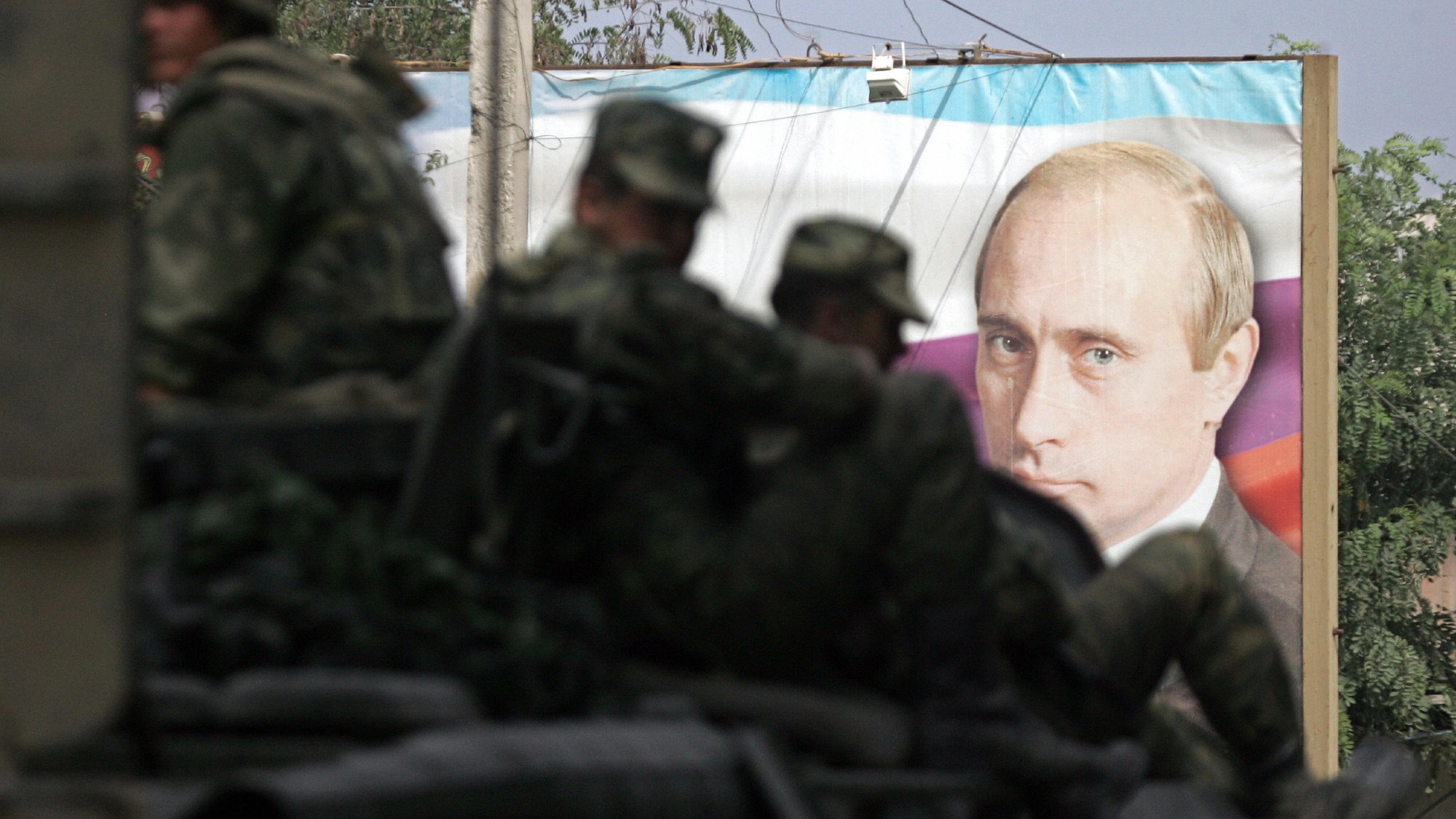
An armoured troop-carrier with Russian soldiers on top passes through the South Ossetian capital Tskhinvali
Of course, Russia was always going to be able to beat tiny Georgia, whose total military amounted to just 30,000 troops, of whom many of the best were serving in the multinational force in Iraq.
However, it turned out not to have been as easy as anticipated, with the Russian offensive dogged by blunders. Half its aircraft losses were to friendly fire incidents, for example, and generals found themselves having to borrow journalists' satellite phones to give orders.
That said, this gave then-Defence Minister Serdyukov and his Chief of the General Staff Nikolai Makarov the opportunity finally to force serious reform on the conservative generals. It was seriously overdue: only 17 percent of the Ground Forces and 3 percent of the Air Force's regiments were combat ready and half the Navy's ships were not seaworthy.
The so-called 'New Look' reforms were meant to create more capable, mobile, flexible and professional forces based on smaller brigades and battalion tactical groups rather than the old divisions. This entailed shrinking the total armed forces by 130,000 men, especially by pruning the top-heavy officer corps (one in three were dismissed), while increasing the proportion of volunteer kontraktniki to conscripts.
These reforms, ironically, possibly even undermined Russia’s capacity to fight a mass war, geared as they were to generating forces able to deploy in small-scale interventions. Many of the reforms have been subsequently reversed since the invasion of Ukraine.
Crimea and Syria: 2014-15
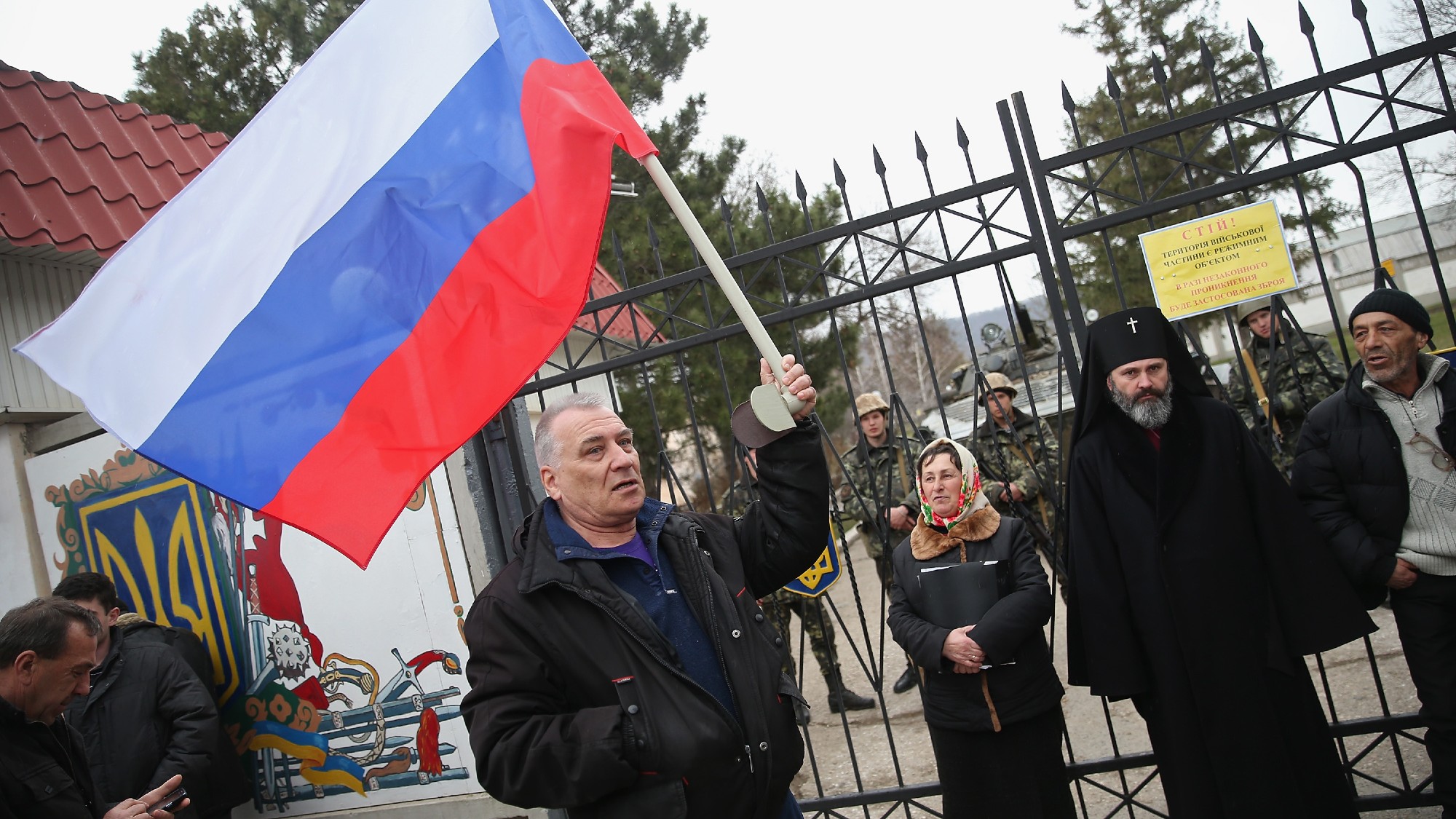
A pro-Russian civilian and Orthodox clergyman pictured outside a Ukrainian base in Perevalne, Crimea, during Russia's illegal annexation of the region
Under Serdyukov and his successor, Sergei Shoigu, real progress was made. However, it was at best partial. In effect, by 2014 Russia had two armies: one which had been quite successfully reformed, largely comprising the special forces and other elite units, and a rump that was still quite some way from the 'New Look' ideal.
Nonetheless, this was enough for the seizure of Crimea following Ukraine's 'Revolution of Dignity' at the start of 2014.
The Crimean Peninsula was strategically and politically crucial to Putin: home of the Black Sea Fleet and something almost every one of his subjects considered rightly theirs (it had been Russian until 1954).
When Kyiv was taken over by a new government keen on getting closer to the West, Putin decided that Crimea ought to be 'returned' and what followed was a textbook military operation. The so-called 'little green men' – Russian special forces – took over the peninsula almost without a shot being fired and it was then annexed.
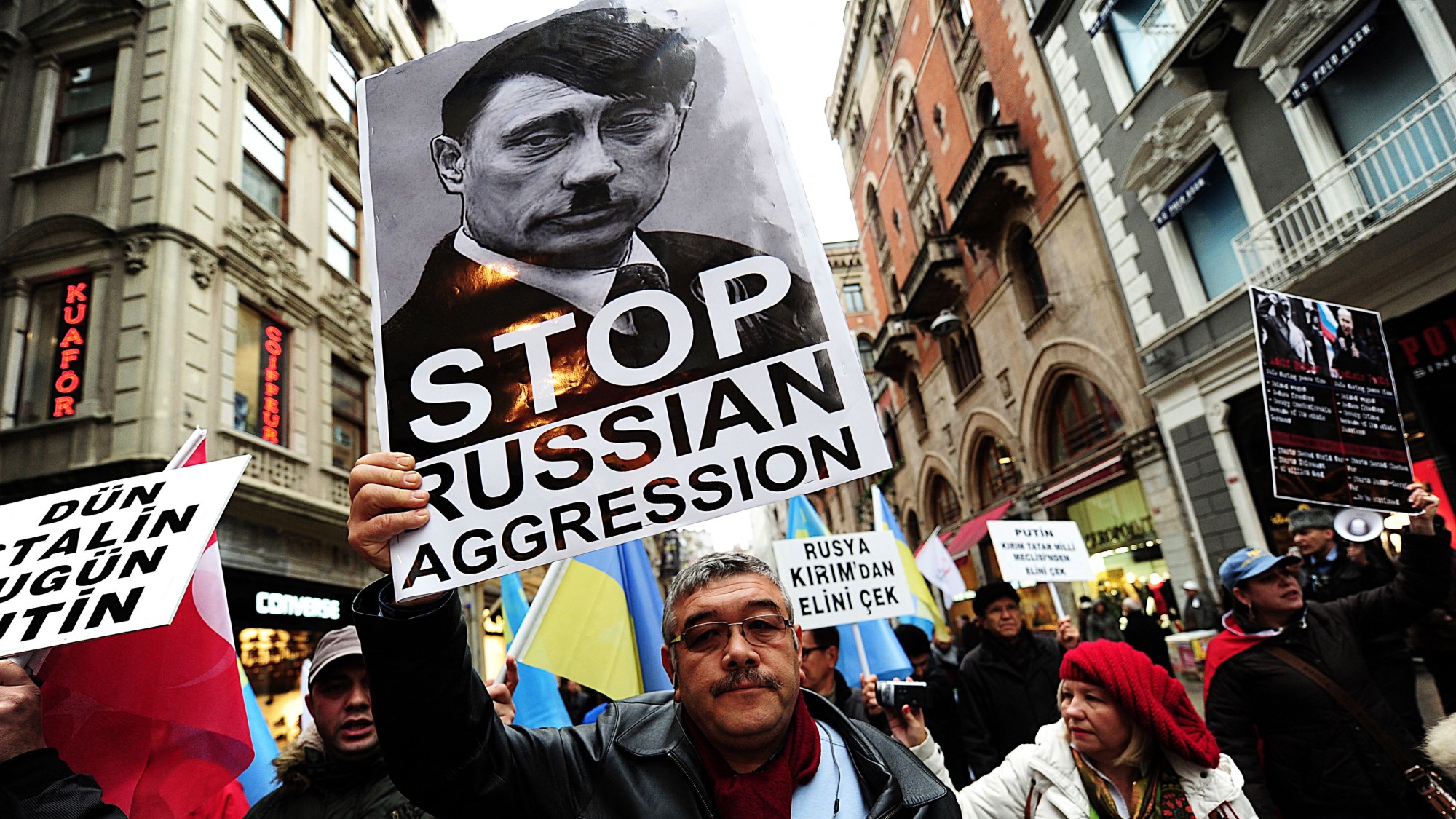
A demonstration in Istanbul against Putin's visit to Turkey on December 1, 2014
One would have been hard-pressed to imagine more propitious conditions for such a coup de main: the Ukrainian military was in disarray, the new government was weak, the West did not want a confrontation, and thousands of Russian troops were already present on the peninsula.
It was a genuine triumph, but it was not a true test of the whole Russian military machine. Nonetheless, Putin was to gain an exaggerated sense of Russia's military capabilities, not fully appreciating just how unusual the circumstances were and how far its small scope required the deployment of just the best of the best.
Much the same could be said of the military deployment in Syria from 2015. Faced with the risk that Bashar al-Assad's brutal regime could fall to popular revolt, and also eager to hit back against a West that was trying politically to isolate Russia since its Crimean annexation, Moscow decided on a limited intervention.
In September 2015, Russian combat aircraft flew to their new base at Khmeimim in Syria, in the start of an operation that would see the ruthless use of air power, mercenaries and special forces to secure the regime.
While Syria was the most asymmetric of conflicts, where Russian air power was virtually unchallenged and where the enemy was divided, a militarily prepared and unified Ukraine was able to deny air superiority to its enemy.
This article originally appeared in History of War magazine issue 131. Subscribe to the magazine and save on the cover price!
Forged In War by Mark Galeotti, published by Osprey, is on sale now
-
 Political cartoons for December 20
Political cartoons for December 20Cartoons Saturday’s political cartoons include drowning rats, the ACA, and more
-
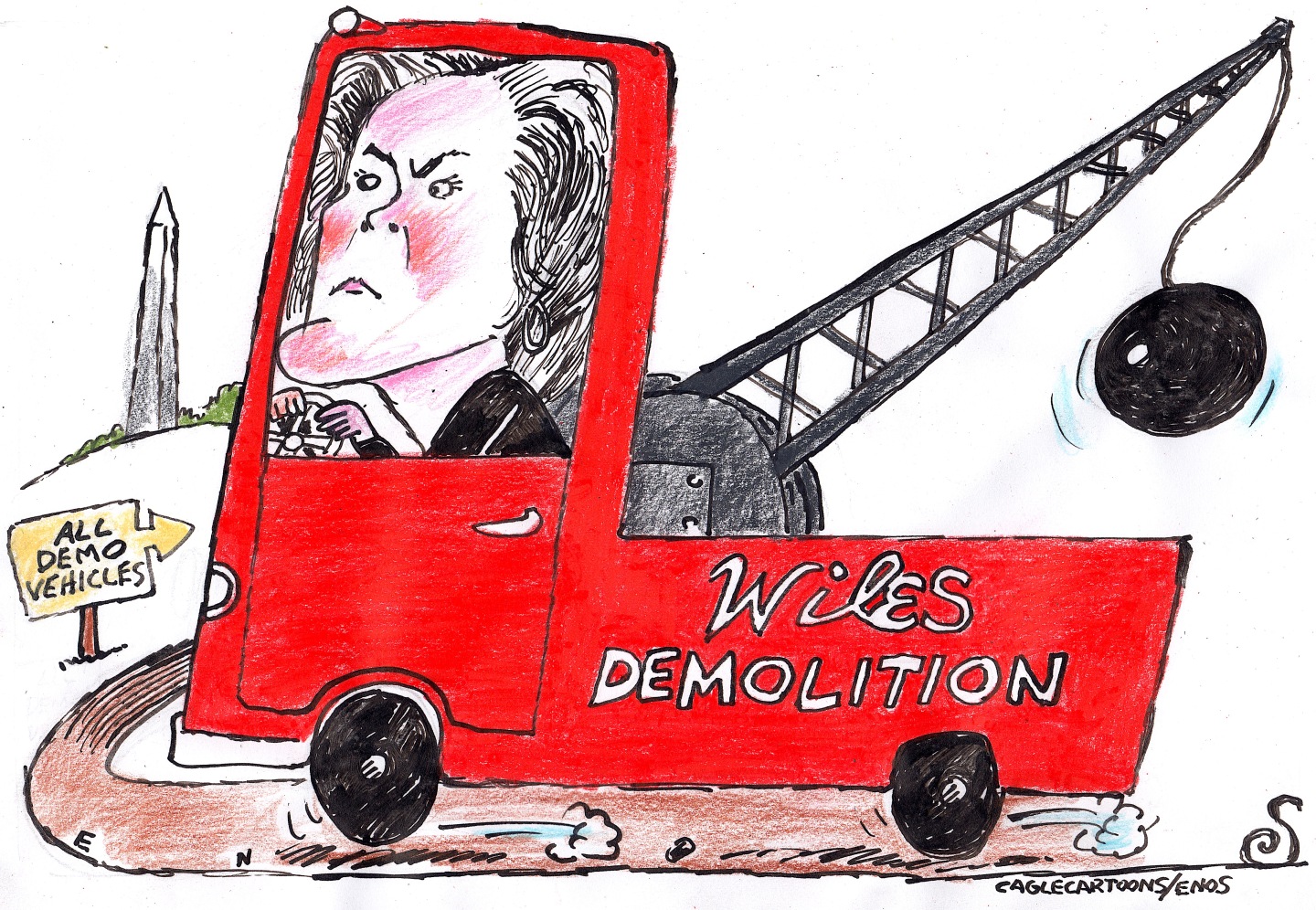 5 fairly vain cartoons about Vanity Fair’s interviews with Susie Wiles
5 fairly vain cartoons about Vanity Fair’s interviews with Susie WilesCartoon Artists take on demolition derby, alcoholic personality, and more
-
 Joanna Trollope: novelist who had a No. 1 bestseller with The Rector’s Wife
Joanna Trollope: novelist who had a No. 1 bestseller with The Rector’s WifeIn the Spotlight Trollope found fame with intelligent novels about the dramas and dilemmas of modern women
-
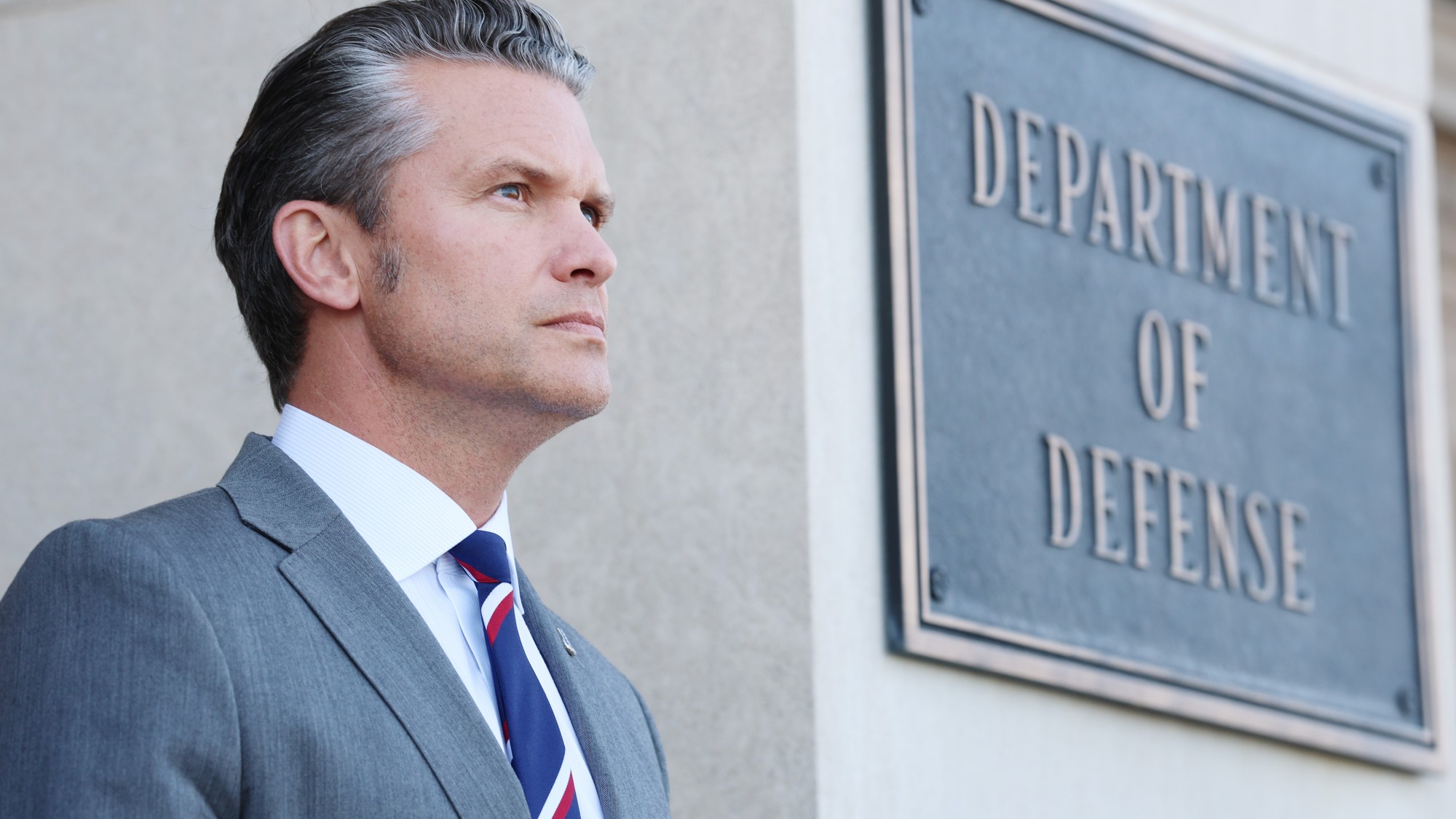 How the War Department became the Department of Defense – and back again
How the War Department became the Department of Defense – and back againIn Depth In 1947 President Harry Truman restructured the US military establishment, breaking with naming tradition
-
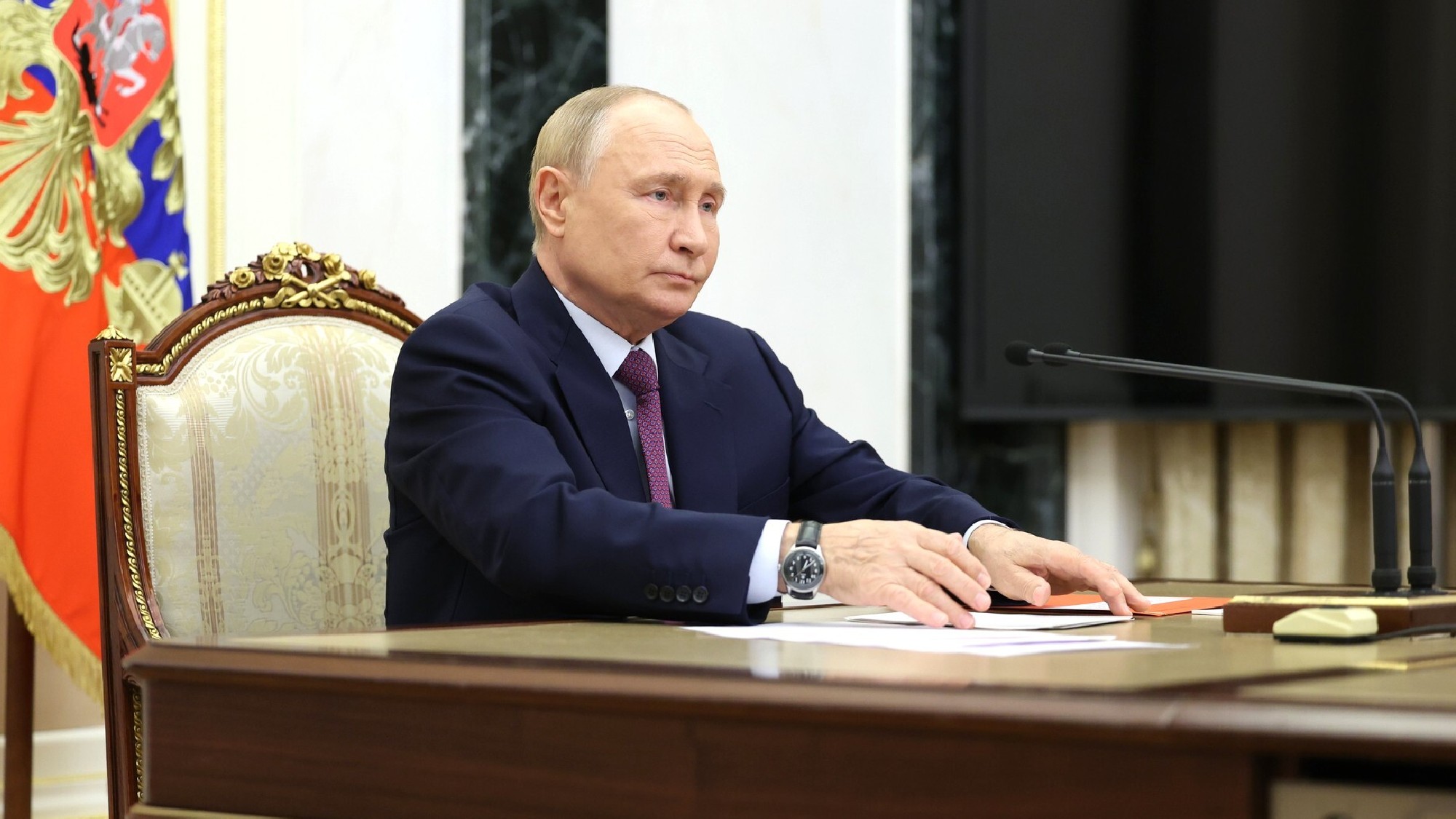 Has Putin launched the second nuclear arms race?
Has Putin launched the second nuclear arms race?In Depth Historian Serhii Plokhy explains why the Kremlin’s nuclear proliferation has begun a dangerous new era of mutually assured destruction
-
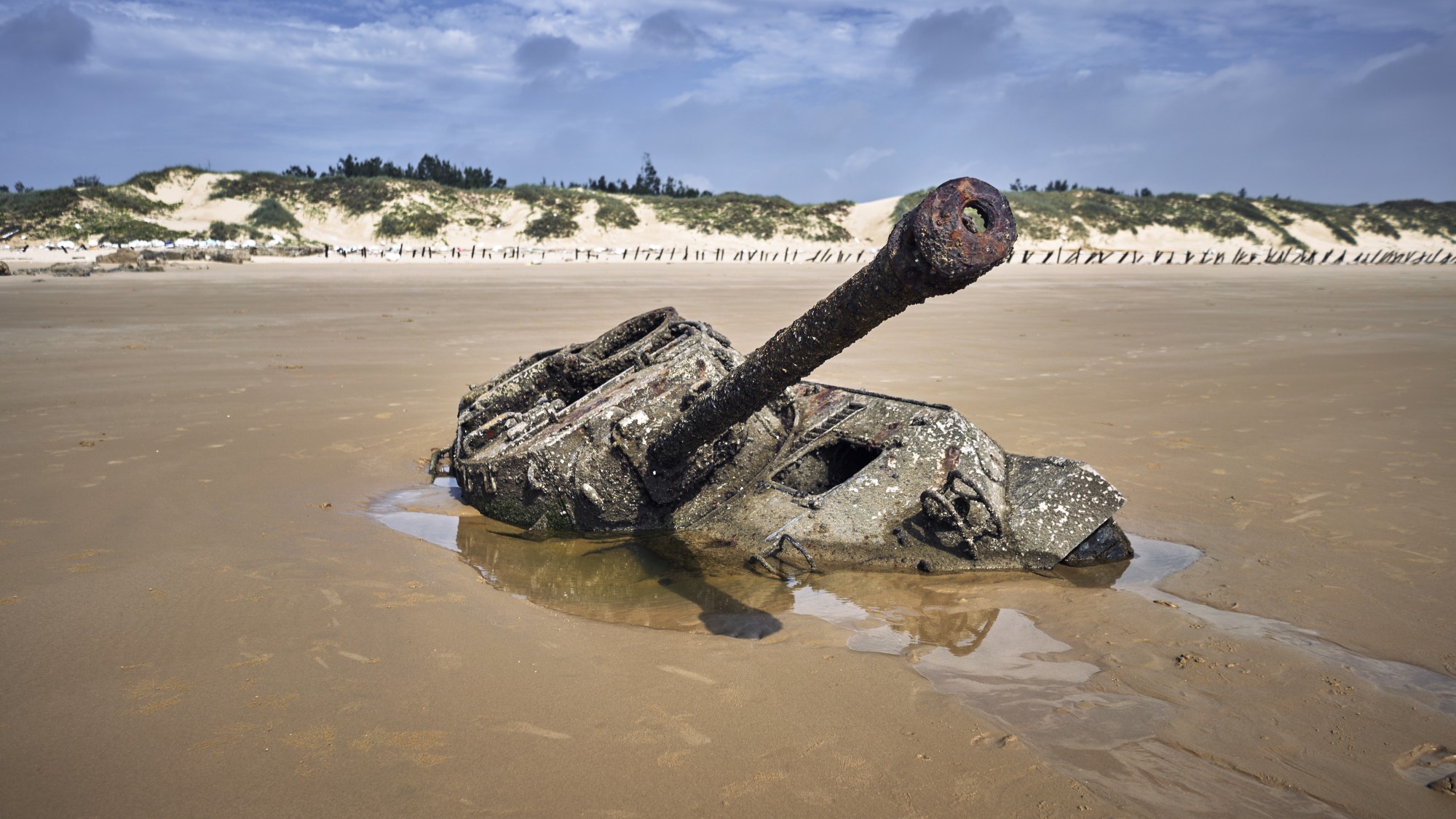 Kinmen Islands: Taiwan's frontline with China
Kinmen Islands: Taiwan's frontline with ChinaIn Depth Just a few miles off the mainland, the Kinmen Islands could be attacked first if China invades Taiwan
-
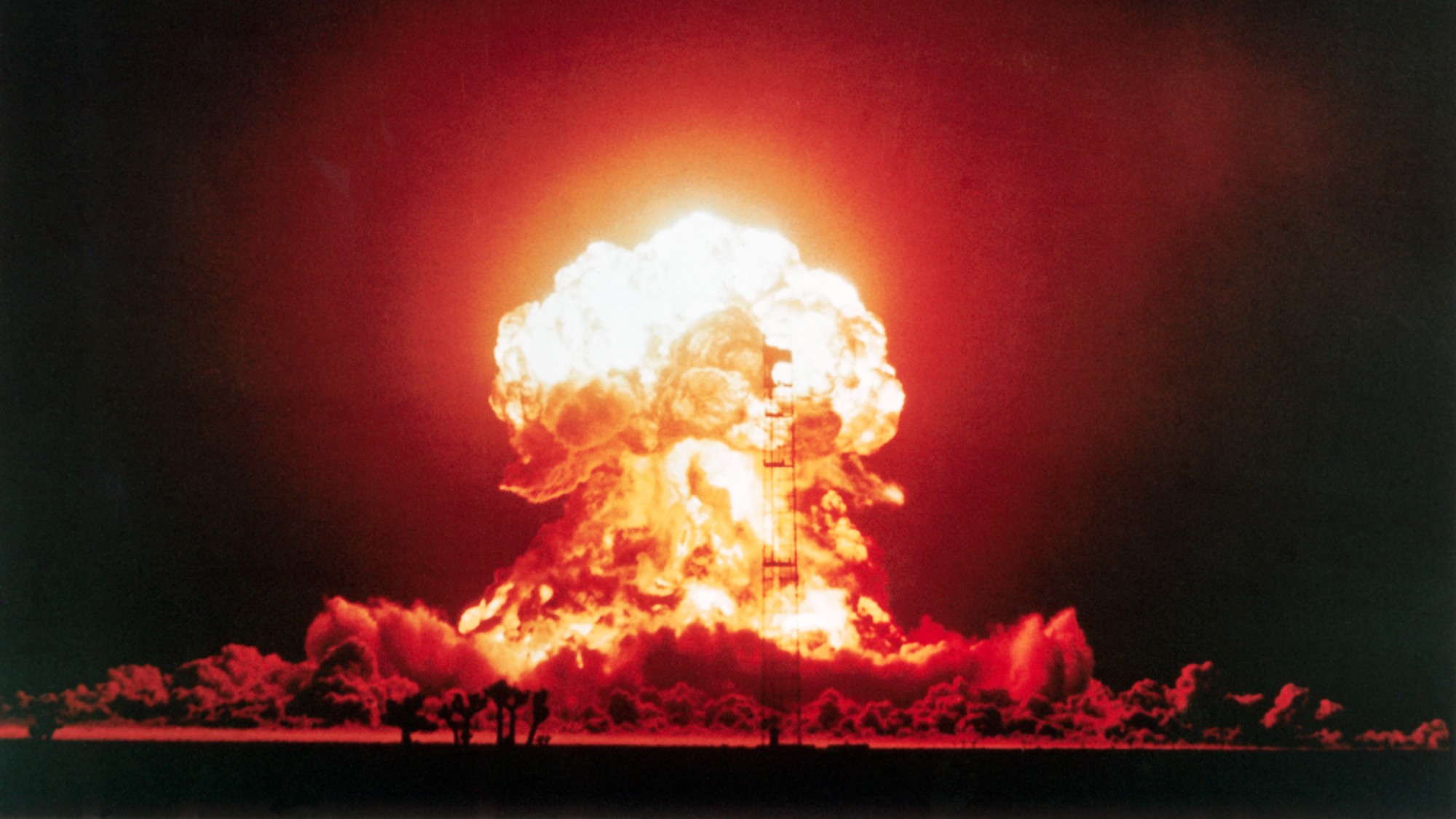 Mutually Assured Destruction: Cold War origins of nuclear Armageddon
Mutually Assured Destruction: Cold War origins of nuclear ArmageddonIn Depth After the US and Soviet Union became capable of Mutually Assured Destruction, safeguards were put in place to prevent World War Three
-
 A brief history of the centuries-old relationship between Ukraine and Russia
A brief history of the centuries-old relationship between Ukraine and RussiaIn Depth The countries are bound together by history and geography, but Putin sees danger in that symbiosis
-
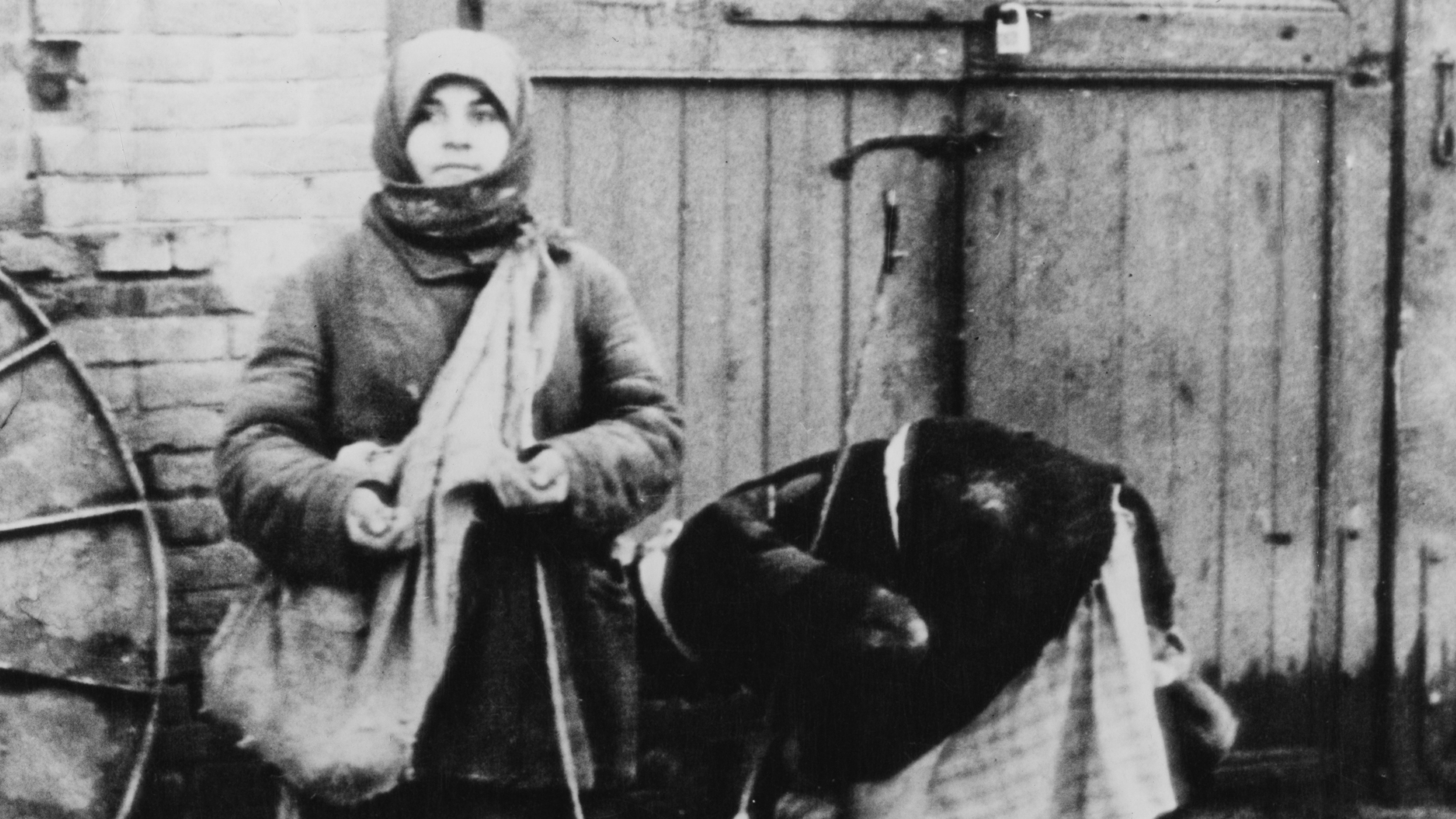 The Holodomor: Ukraine’s other significant anniversary
The Holodomor: Ukraine’s other significant anniversaryfeature The famine killed nearly four million people, stripped the country of it's independence, and still was denied by the Soviet Union
-
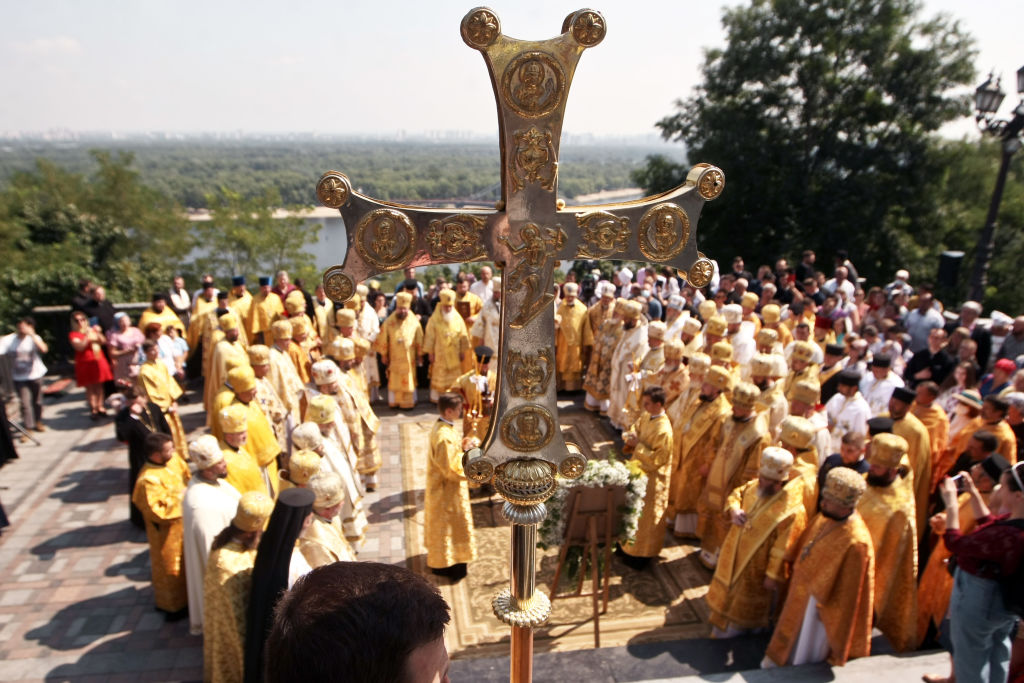 Vladimir Putin’s narrative of Russian victimhood examined
Vladimir Putin’s narrative of Russian victimhood examinedfeature Russian president has repeatedly pointed to his country’s history to justify Ukraine invasion